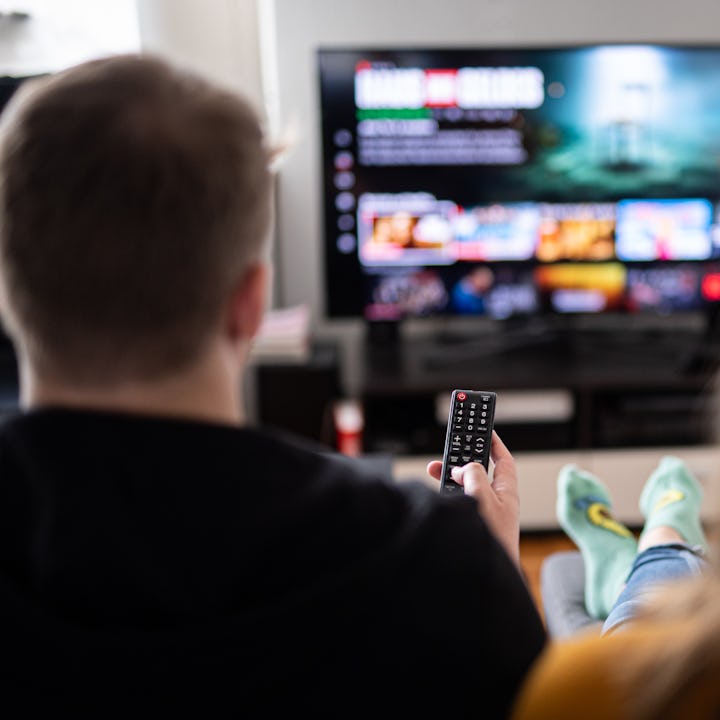Netflix Is Cracking Down On Account Sharing: Here Are The New Rules
New account-sharing limitations might affect parents with blended families or kids at college.

It’s hot outside — like record-setting hot. It makes sense that many are opting to quite literally “Netflix and chill” inside. But the streaming giant, which had a dismal Q1 that cost $185 billion, might start making it harder for subscribers to share accounts to save money or use Netflix outside of their own home. This opens up a can of worms, especially for co-parenting families or parents with kids living in multiple locations, like for college and back home.
Netflix has already piloted the new program, called Netflix Homes, in Argentina, El Salvador, Guatemala, Honduras, and the Dominican Republic. Customers will be asked to pay an additional fee if they use their account for more than two weeks outside of their primary residence, according to Bloomberg, which first reported the password-sharing crackdown method. It costs roughly $2.99 per additional household, or “sub-account.”
The good thing is that this doesn’t affect streaming on mobile devices, such as a laptop, phone, or tablet. So if your kid usually streams on a tablet when they are away at school or at their other parent’s house, it appears that adding a sub-account might not necessary. Netflix determines what an account’s main “home” with bits of information like “IP addresses, device IDs, and account activity.” Still, if your teen streams enough Netflix from their dorm, the streaming service might prompt them to change the main “home” on the account.
The new Netflix Homes strategy also allows users to “watch Netflix on a TV outside your home for up to 2 weeks as long as your account has not been previously used in that location. This is allowed once per location per year,” to account for vacations where you might watch Netflix on a TV in an Air B&B, resort, or hotel.
Netflix also notes that “We will not automatically add a home and charge the extra fee,” as the account user has to confirm the purchase. It is not clear if any profile (like a child’s) will be able to confirm this purchase, but it should be safe to assume any parental controls already set should take care of this.
If a sub-account is deemed necessary, a new member can set up said sub-account with their own email address and still stream Netflix at the same time as the primary user, depending on the level of the plan. But for parents, this also creates another weird obstacle. For instance, if a 9-year-old spends time between two parents’ houses, will they need to have a sub-account for each house? Will parents have to set up email accounts for their kids just so they can have their own profile?
Netflix’s definition of “home” as a singular physical location also assumes that families are nuclear. More and more families are experiencing more non-traditional dynamics, whether it is a blended family or chosen family situation.
And, for the more tech-savvy, it doesn’t seem like using a VPN is going to do the trick. The streaming service suggests that anyone getting the message that their account is being used in too many locations “make sure that the device is not connected to a VPN, proxy, or any unblocker service.”
It’s going to be interesting once this feature is formally rolled out in the U.S. and who receives the prompt to add an additional home to their Netflix account. Now might be a good time to remind the kids of any rules or boundaries you have for streaming and in-app purchases and account changes.